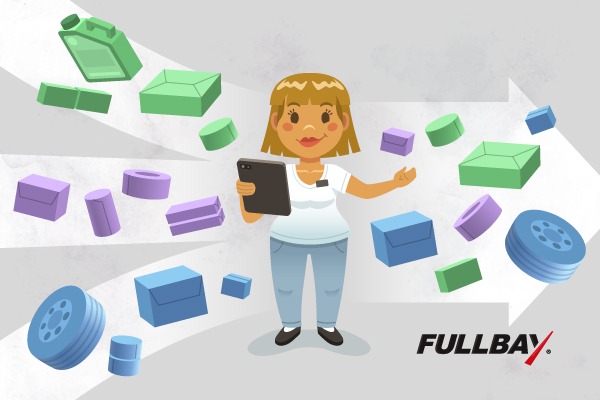Streamline Your Inventory and Buying Process With Centralized Ordering

Aside from cycle counts, centralized ordering can be one of the most important things shops do to manage inventory. By definition, centralized ordering is having one person or at least one department buy all your stock. That way, you won’t have random parts constantly coming in from all directions every day. It’s an effective strategy that streamlines your stockroom and helps keep your budget under control.
Why You Need to Centralize
If you don’t practice centralized ordering, you probably already know the level of chaos that rules when multiple people order parts. You likely overspend on stock all the time. Plus, you might have noticed orders coming in, full of parts you already have on the shelves. Sometimes, that can be partly due to not having a process for managing inventory. However, several people making orders without knowing what everyone else has ordered is a guarantee they’ll double up on parts.
Centralized ordering not only saves money on stock you don’t need. It also helps get you the best pricing on items you do need. Vendors usually offer free shipping or give price breaks if you order certain amounts of stock. The person who does all the ordering is in charge of the “shopping list”. They know what’s needed and when it needs to be in your shop. Plus, they also know how close the numbers on the shopping list are to the various vendors’ thresholds. If you only need one more filter for free shipping, for instance, they can place the order. It allows them to make orders on a “just in time” basis while getting vendor perks that save money.

How to Implement Centralized Ordering
Some shops put the parts manager in charge of ordering stock while others have an official purchaser. It’s a good strategy for shops whose parts manager is too busy to effectively stay on top of ordering. However you choose to do it, once one person is in charge of purchasing, no one else should be placing orders. If anyone needs parts, the request should go through the official parts orderer, including reporting cycle counts to the purchaser. That’s because he needs to know how close your stockroom is to the internal thresholds you set for your shop.
Part of the purchaser’s job is to be aware of all the sales and parts use going on. As we talked about above, that will allow him to pool orders according to stockroom counts, service orders, and even counter sales. The perfect example is when a tech uses parts that bring your inventory down to an ordering threshold, but your shopping list doesn’t quite meet the vendor’s threshold. If the purchaser knows that the counter just sold a special-order part, and that part will get his shopping list to the vendor’s minimum, he can pull the trigger on the order. That fulfills three critical factors:
- the customer gets his special-order part immediately
- your shop saves money for ordering the vendor’s minimum
- inventory levels stay where they need to be
Centralized ordering is effective for shops with multiple locations, too. With more techs using parts and multiple counter orders happening every day, your business will meet those vendor thresholds more easily and frequently. That will keep parts moving through your stockroom and increase cash flow.
Is There a Downside?
No plan is perfect, and there are a couple of cons to go along with the many pros of centralized ordering. First, if you have a chain of shops with only one purchaser for everybody, the outlying shops could end up feeling dependent and out of the loop. Second, problems with the supply chain can crop up if the purchaser isn’t aware of all the shops’ needs, especially in an emergency situation. These issues wouldn’t typically affect a single-shop operation, but lack of communication could turn centralized ordering into a con for them, too. However, there’s a simple answer to these issues.
Fullbay eliminates any perceived downside to centralizing your ordering process. It lives in the Cloud, so everyone can access the software, from techs to front-counter personnel at all locations. Whenever parts get used or sold, Fullbay adjusts your inventory immediately. Your parts purchaser can check in several times a day to gauge how things are going and can make orders any time as necessary. Additionally, you enter cycle counts directly into the software as you do the count. That means drastically reduced errors from duplicate entry and updated inventory numbers (so your purchaser always sees real time numbers) and errors from duplicate entry are drastically reduced. If you’ve been wanting to streamline your inventory and make your buying process more efficient, Fullbay does it all. Want to give Fullbay a try right away? Just fill in the form below.

